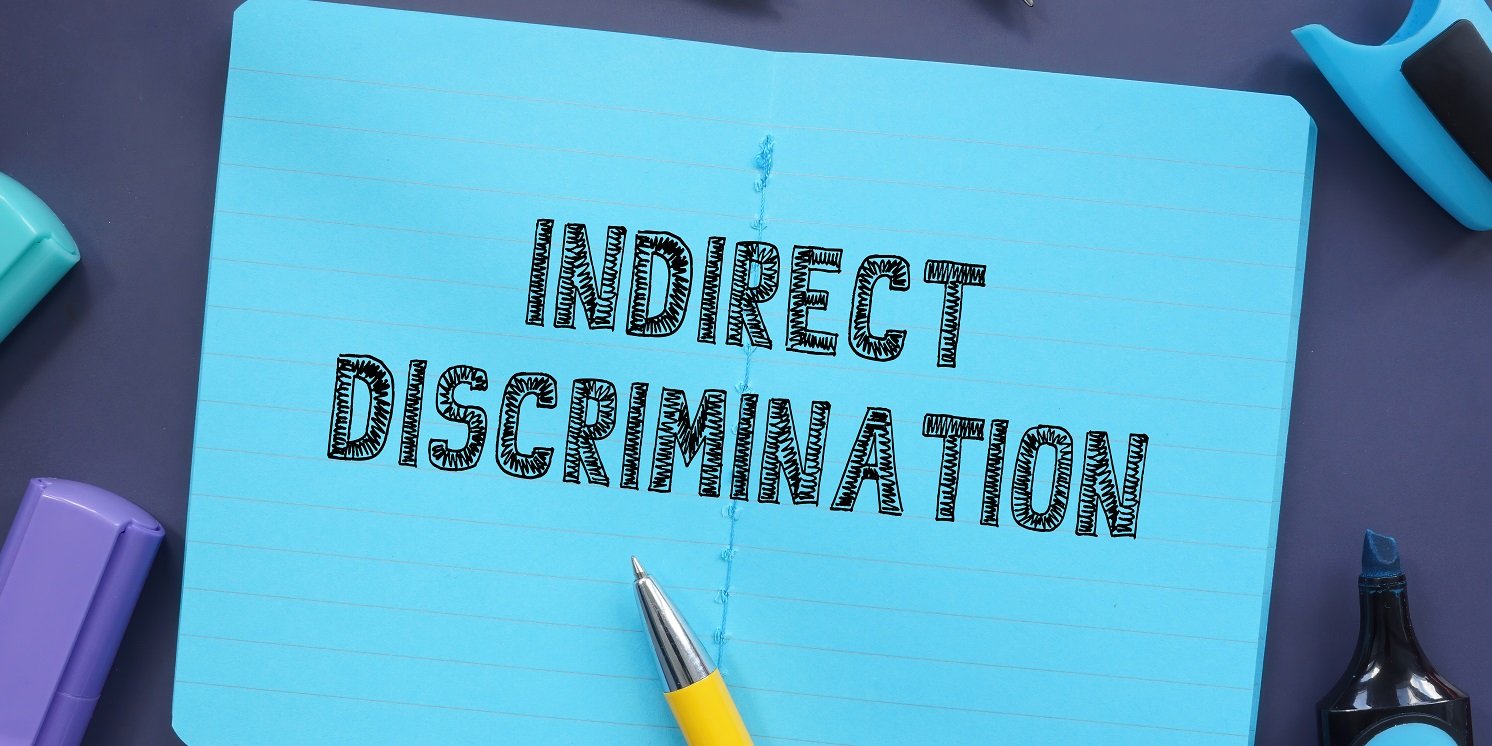What is indirect discrimination and how can it manifest within a business environment? What can employers and managers to do manage the risk of indirectly discriminating against a particular group of staff? Toby Pochron, senior associate at Freeths LLP, outlines what to look for and how to proactively tackle situations where indirect discrimination could occur.
What is indirect discrimination?
Direct discrimination occurs when someone is treated unfairly because of a protected characteristic they have. Indirect discrimination, on the other hand, occurs where there is a practice, policy or rule which, although not intended to treat anyone less favourably, in practice has the effect of putting group of people with a particular protected characteristic at a disadvantage.
Indirect discrimination and protected characteristics

Something can be indirect discrimination if it has a worse effect on someone because they possess any of the following protected characteristics as listed in the Equality Act (2010):
- Age
- Disability
- Gender reassignment
- Marriage or civil partnership
- Pregnancy and maternity
- Race
- Religion or belief
- Sex
- Sexual orientation
See our article covering these 9 protected characteristics for more information on them.
Establishing indirect discrimination
.jpeg?width=1000&name=Woman%20with%20her%20hand%20extended%20signaling%20to%20stop%20(only%20her%20hand%20is%20in%20focus).jpeg)
In order for someone to establish indirect discrimination has happened or will happen to them:
- There must be a practice, policy or rule which is applied equally to everyone (including people who do not share the person’s protected characteristic);
- It must disadvantage people with their protected characteristic compared to people who do not share this protected characteristic;
- It has or will disadvantage them personally; and
- The organisation or person enforcing that practice, policy or rule cannot show that there is a proportionate reason for applying it.
If someone can establish all of the above, it will amount to indirect discrimination unless the organisation or person applying the practice has an objective justification to do so. They must be able to show that it is a proportionate means of achieving a legitimate aim. For example:
- There is a business requirement
- For the health and safety and welfare of individuals
- It is necessary in order to deliver an efficient service
In short, if it can be shown that there is a good enough reason for applying it, the indirect discrimination will be lawful.
Examples of indirect discrimination

Here are some examples of indirect discrimination to give a fuller picture on how and where it may occur:
1. An employer requires their employees to work full-time
This requirement could disadvantage women as a group, as women in society often have a greater role in carrying out the domestic and childcare responsibilities compared to men. They are therefore more likely to need or want to work part-time.
Unless the employer can objectively justify the need for a full-time worker to do the job, this requirement is likely to be indirectly discriminatory based on sex against a woman with childcare responsibilities.
Related article: The employer's guide to flexible working
2. Imposing a minimum height requirement in a job advertisement
If the role requires the individual to be a certain height, this may be deemed an acceptable requirement. If it is not a necessary requirement, it could be indirectly discriminatory against women who, on average, tend to be smaller in stature than men. It could even be found to be discriminatory against certain minority ethnic groups.
3. A new shift pattern where everyone works fewer but longer hours
An employee with a disability may find themselves exhausted after working two of the longer days. In this case, the new shift puts the disabled employee and other people who have the same or a similar disability at a disadvantage. Unless the employer is able to justify the new shift pattern, it is likely that it will be indirectly discriminatory.
4. A shop manager requires all employees to work on Saturdays
A Jewish employee explains that they cannot work on Saturdays because it is a religious day in Judaism. If the shop manager refuses to take the employee off a Saturday shift, this would mean that the employee cannot practice their religion. The rule is therefore indirectly discriminatory, as it puts people who share this religion at a disadvantage compared to other faiths.
Learn more: Avoiding religious discrimination in the workplace
Reducing the risk of indirect discrimination

In order to reduce the risk of any potential claims of indirect discrimination arising, employers should aim to implement the following measures:
Existing policies and practices
It would be good practice to review and monitor existing policies and their potential and actual effects on staff.
Equality impact assessments
Carry out an equality impact assessment before introducing new policies and practices. By reviewing practices regularly and advising management on any problems that may arise, you reduce the risk of implementing a policy that is potentially indirectly discriminatory.
Alternatives
If a potential disadvantage is identified, you should consider any less discriminatory alternatives to achieving the aim.
Justified
If you are confident that the new policy can be justified as a proportionate means of achieving a legitimate aim, you can continue to apply it. Whether or not it can be justified depends purely on the nature of the policy in question and the particular facts. If there are no alternatives to the particular policy, you are more likely to be able to justify it.
Clear legitimate aims
Always be clear on what your legitimate aim is and set this out before implementing the new policy.
Written records
Retain written/documentary evidence that goes towards demonstrating your thought process throughout. Having an effective document management process will help you keep and access the evidence you need should an indirect discrimination claim arise.
Keep important HR documents secure and safe with a document management software system
Communication
Ensure that at all times there is effective communication within the business regarding the new policy.
Listening to concerns
Do not automatically disregard an employee’s request not to implement the policy. If they are unhappy with the policy, and there is potential indirect discrimination alluded to, you should immediately review the policy. If possible, you could offer a compromise, consider any possible or alternatives, or consider amending it.
This is important as any steps you take in response to the concerns raised will be taken into account by an employment tribunal should the matter be litigated.
Related article: Employment tribunals: the costs for employers
Dealing with an indirect discrimination claim

Where an employee does bring an indirect discrimination claim, it would be advisable to instruct solicitors as soon as possible. This way you can obtain advice on the merits of the employee’s claim and whether they have good prospects of defending the claim in the employment tribunal. If possible, you will also want to demonstrate any measures you took to address any concerns that were raised prior to the claim.
You will need to ensure that you have sufficient evidence to counter the employee’s arguments in respect of any disadvantage they suffered as a result of the particular policy or practice. You will also want to put forward your case for justifying the application of it.
Once you have assessed the merits of the claim, if appropriate you should also consider whether offering a settlement would be a better alternative to litigation.
Read more from the myhrtoolkit blog
How to handle an employee grievance procedure

Written by Toby Pochron
Toby Pochron is a Senior Associate in the Freeths LLP Employment Law department. He was a Partner in the Employment Law department of Ironmonger Curtis.


 Holiday Planner
Holiday Planner Absence Management
Absence Management Performance Management
Performance Management Staff Management
Staff Management Document Management
Document Management Reporting
Reporting Health and Safety Management
Health and Safety Management Task Management
Task Management Security Centre
Security Centre Self Service
Self Service Mobile
Mobile



